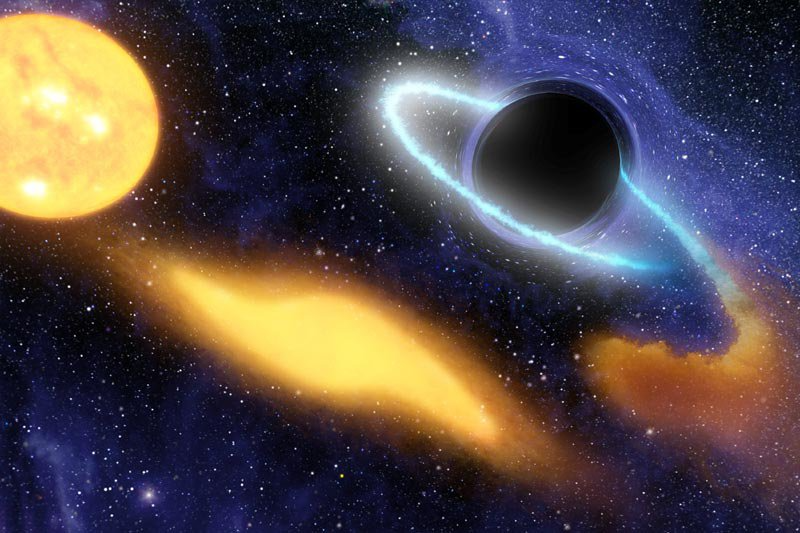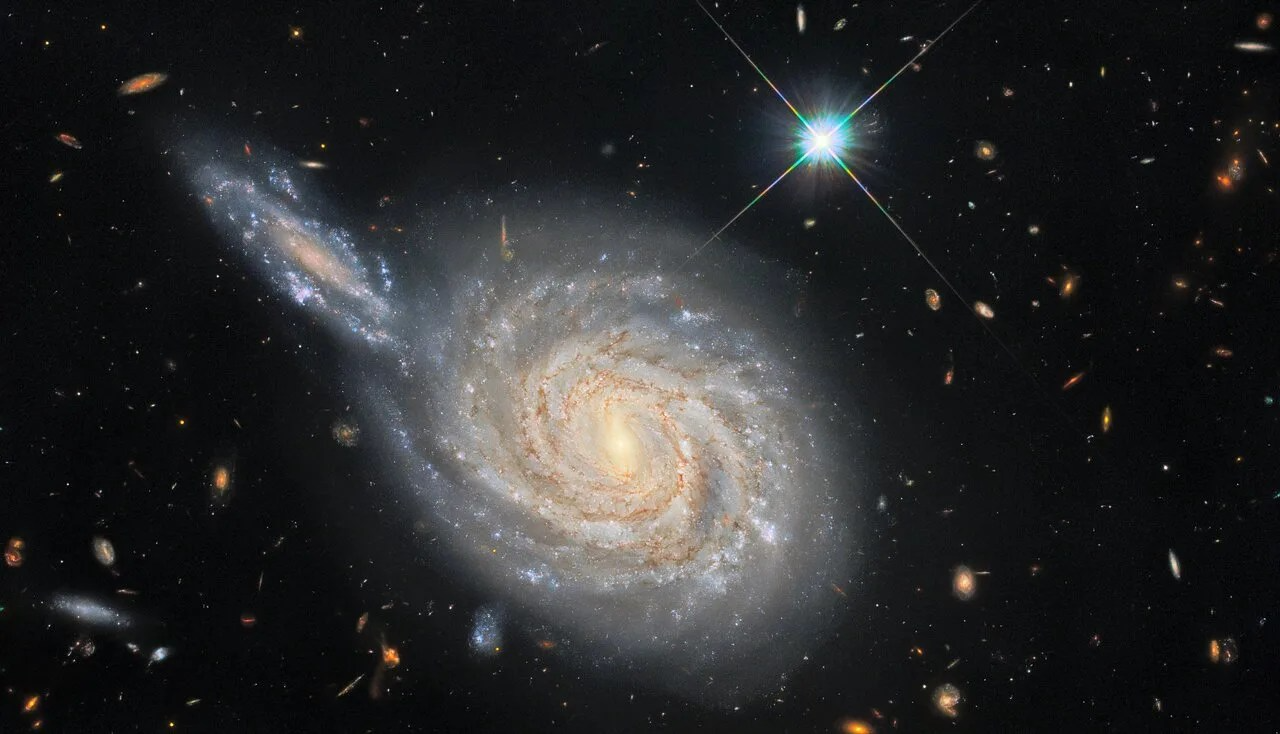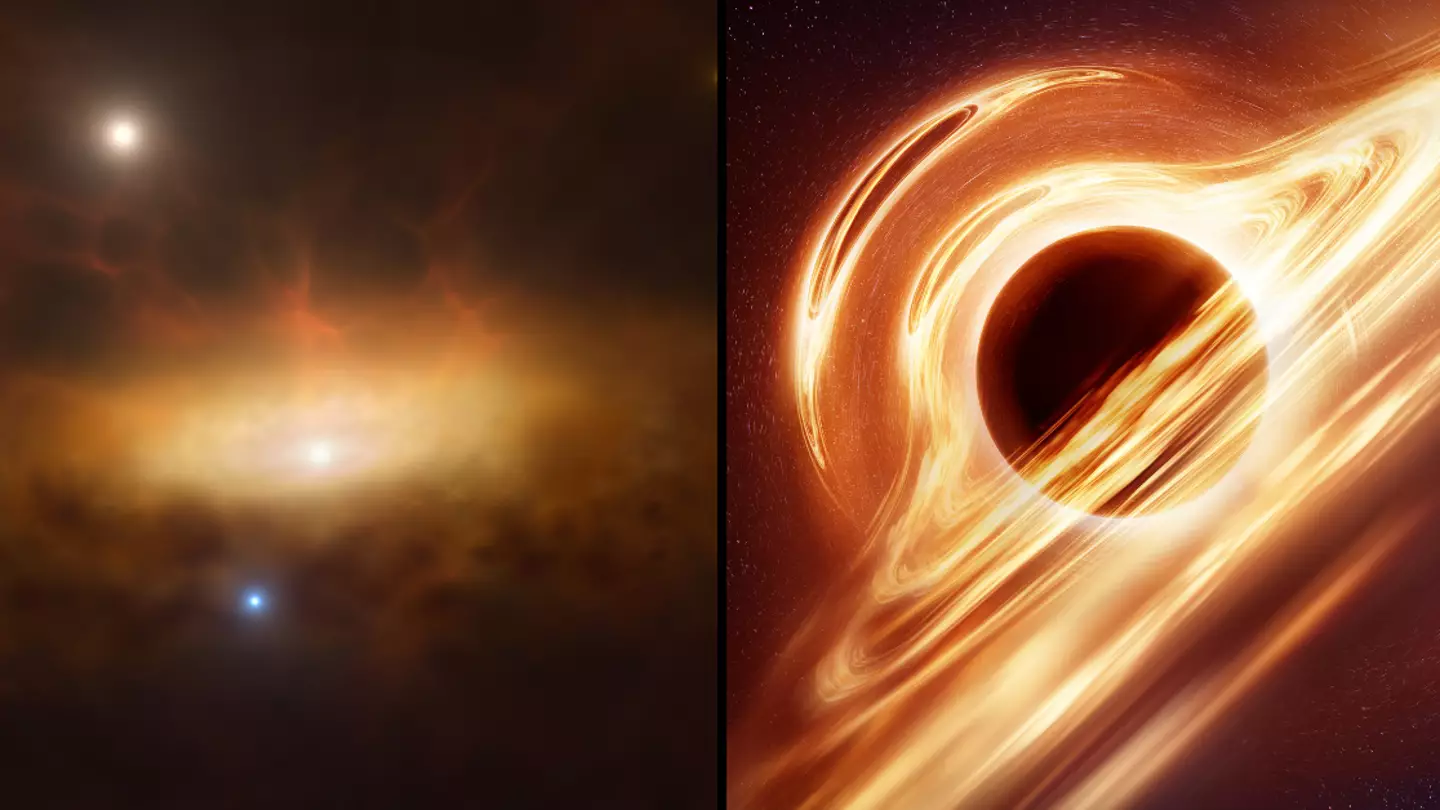Recent observations from NASA’s Chandra X-ray Observatory, Neil Gehrels Swift Observatory, and ESA’s XMM-Newton have provided groundbreaking insights into how supermassive black holes consume material. Researchers have made significant strides in unraveling the timeline and process by which these cosmic giants devour their stellar snacks.

In the distant galaxy AT2018fyk, located approximately 860 million light-years from Earth, a supermassive black hole—about 50 million times the mass of our Sun—has been the focus of intense study. This black hole, at the heart of AT2018fyk, has a remarkable feeding pattern that astronomers have been tracking closely.
A Star’s Dramatic Encounter
An artist’s illustration captures the dramatic moment a star encounters the black hole in AT2018fyk. This star follows an elongated, elliptical orbit around the black hole, causing its closest approach to be significantly closer than its farthest point. As the star nears the black hole, intense tidal forces stretch and pull material from it, creating two prominent tidal tails of stellar debris.

The illustration highlights a crucial phase in the star’s orbit, soon after the black hole’s tidal forces have partially destroyed it. The tidal tails, still close to the star, are a visual testament to the star’s violent encounter. As the star continues its orbit, the disrupted material falls back towards the black hole, which then generates a burst of X-rays—a phenomenon observed every 3.5 years when the star makes its closest approach.
Tracking the Black Hole’s Feast
Astronomers first detected the black hole’s activity in 2018 when the optical survey ASAS-SN reported a significant increase in brightness from AT2018fyk. Follow-up observations using NASA’s NICER and Chandra, along with XMM-Newton, confirmed that this outburst was due to a “tidal disruption event” (TDE), where a star had been shredded and partially consumed by the black hole.

Initially, the intense X-ray and ultraviolet (UV) emissions faded as the star’s remnants were swallowed. However, astronomers observed a resurgence of X-ray and UV light about two years later, indicating that the star likely survived the initial disruption. It had entered a highly elliptical orbit, leading to a second phase of material ejection and increased X-ray emissions.
Predicting the Next Cosmic Meal
Based on their observations, the research team predicted that the black hole’s next feeding period would conclude in August 2023. Chandra’s observations on August 14, 2023, confirmed this prediction with a noticeable drop in X-ray emissions, marking the end of the current feeding phase. This data has refined our understanding of the star’s orbital period and enabled predictions for future feeding events.
A Visual Insight into Cosmic Dynamics
The digital illustration accompanying this study vividly depicts the star shedding debris as it orbits the supermassive black hole. The star, shown as a bright blue-white ball, releases two tidal tails as it approaches the black hole, depicted as a dark sphere surrounded by a swirling disk of hot gas.
In the background, the image of the distant galaxy cluster MACS J0416 showcases a vibrant tapestry of galaxies, with their spiraling arms revealed through detailed observation.
Further Reading about NASA Telescope
For more in-depth information, refer to the August 14, 2024, issue of The Astrophysical Journal, which details these findings. The study was conducted by an expert team including Dheeraj Passam (Massachusetts Institute of Technology), Eric Coughlin (Syracuse University), Muryel Guolo (Johns Hopkins University), Thomas Wevers (Space Telescope Science Institute), Chris Nixon (University of Leeds, UK), Jason Hinkle (University of Hawaii at Manoa), and Ananaya Bandopadhyay (Syracuse).
NASA’s Marshall Space Flight Center oversees the Chandra program, with the Smithsonian Astrophysical Observatory managing Chandra’s scientific operations from Cambridge, Massachusetts, and flight operations from Burlington, Massachusetts.
By the way, donnot check out site: Galaxysecrets to have another useful information. Feel free share your thought at the comment box
Sources:








